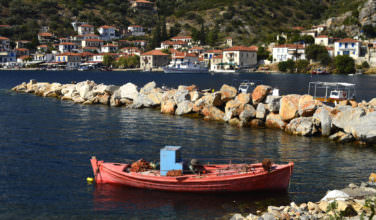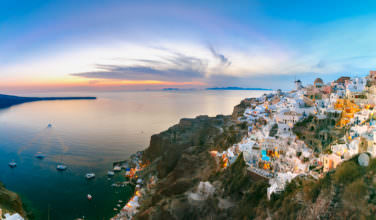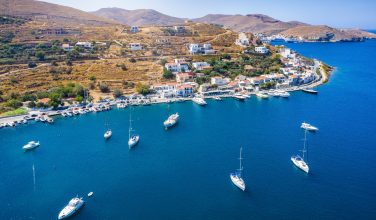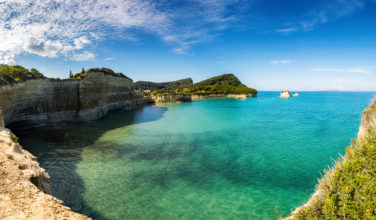Four Famous Ruins in Athens
Comments Off on Four Famous Ruins in Athens
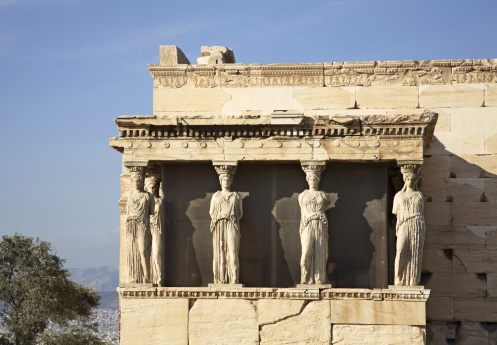 One of the most amazing things about visiting Greece, especially Athens, is that you can literally stumble over ancient ruins. Small blocks of marble might be the foundation from an ancient temple or home; stand-alone columns are all that remain of a building built over 2,000 years ago, tiny fragments of frescoes offer a glimpse into life of the ancient Athenians. Greece is practically overflowing with ruins that have survived thousands of years of war, pillaging, weather, and people. Here are just four of the more famous ruins in Athens.
One of the most amazing things about visiting Greece, especially Athens, is that you can literally stumble over ancient ruins. Small blocks of marble might be the foundation from an ancient temple or home; stand-alone columns are all that remain of a building built over 2,000 years ago, tiny fragments of frescoes offer a glimpse into life of the ancient Athenians. Greece is practically overflowing with ruins that have survived thousands of years of war, pillaging, weather, and people. Here are just four of the more famous ruins in Athens.
Temple of Olympian Zeus
Though only a few columns remain, the sheer size of those columns left standing gives visitors a very clear picture of just how impressive the Temple of Olympian Zeus once was. Construction began in the 6th century BC and it was designed to be the greatest temple in the ancient world. Like most great construction projects of the ancient world, the temple took hundreds of years to finish. It was not completed until the reign of the Roman Emperor Hadrian in the 2nd century AD; 638 years after the project had begun (and you thought the Big Dig took forever!)
During the Roman periods it was considered the largest temple in Greece and housed one of the largest statues in the ancient world. The temple was pillaged in a barbarian invasion in the 3rd century AD and its life as a temple was officially ended in 425 by Christian emperor Theodosius II, who prohibited the worship of the old Roman and Greek gods. Over the centuries locals for new construction projects quarried the temple.
Erechtheum
The Erechtheion is a temple on the north side of the Acropolis. On the south side of the temple the famous “Porch of the Maidens”, with six female figures (caryatids) as columns, serves as one of the temple’s most striking viewpoints. Although they may look the same from far away, the six caryatids are actually incredibly different and splendid in their details. Their faces, stances, draping of their clothes, and hair are carved separately.
The three women on the left stand on their right foot, while the three women on the right stand on their left foot. Their intricately arranged hairstyles are not just for decoration; they actually provide static support to the statues’ necks, which are the thinnest and structurally weakest part. The original caryatids have been removed to protect them from further damage, and the five originals that are still in Athens are housed in the Acropolis Museum.
The Erectheum was once associated with some of the most holy relics of the ancient Athenians, including the sacred olive tree that sprouted when the goddess Athena (the namesake of Athens) struck the rock with her spear during her fights with Poseidon for patronage of the city.
Temple of Hephaestus
Although often overshadowed by its illustrious neighbor, the Parthenon, The Temple of Hephaestus, also known as the Hephaisteion, in one of the most well preserved temples in Athens, if not in all of Greece. For those that love Grecian architecture, sculpture, and design, the Temple of Hephaestus is a must-see! Around 700 AD, the temple was turned into a Christian church and dedicated to Saint George Akamates.
Parthenon
The Parthenon is one of the most popular tourist attractions in Greece. The Parthenon was built to house a massive statue of Athena Parthenos made from ivory, silver and gold. In the 5th century the statue was looted by a Roman Emperor and taken to Constantinople, where it was later destroyed. Construction of the Parthenon began in 447 BC when the Athenian Empire was at the height of its power and was completed in 438 BC. The Parthenon is considered the most important surviving building of Classical Greece, a symbol of the lasting powers and influence of Ancient Greece, Athenian democracy and western civilization, and one of the world’s greatest cultural monuments ever built.
In 1687 much of the Parthenon was destroyed in a battle between the Ottoman Empire and the Italian forces sent to recapture the Acropolis. It wasn’t until 1975 that the Greek government began a concerted effort to restore the Parthenon and other Acropolis structures destroyed over hundreds of years of war.
Over its long life, the Parthenon has served as a Christian Church, as well as an Islamic mosque when the Ottoman Empire conquered Greece.
Categorized in: About Athens, Greece, Greek Travel Guide
This post was written by Greek Boston
Share this Greek Travel Article:


